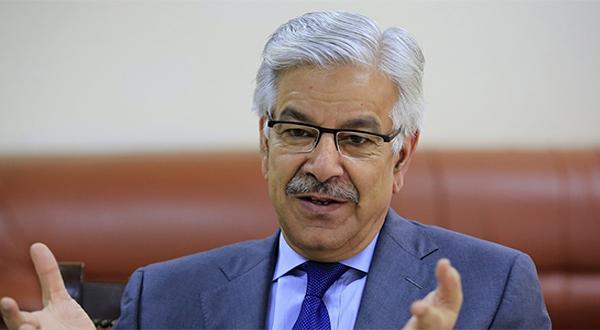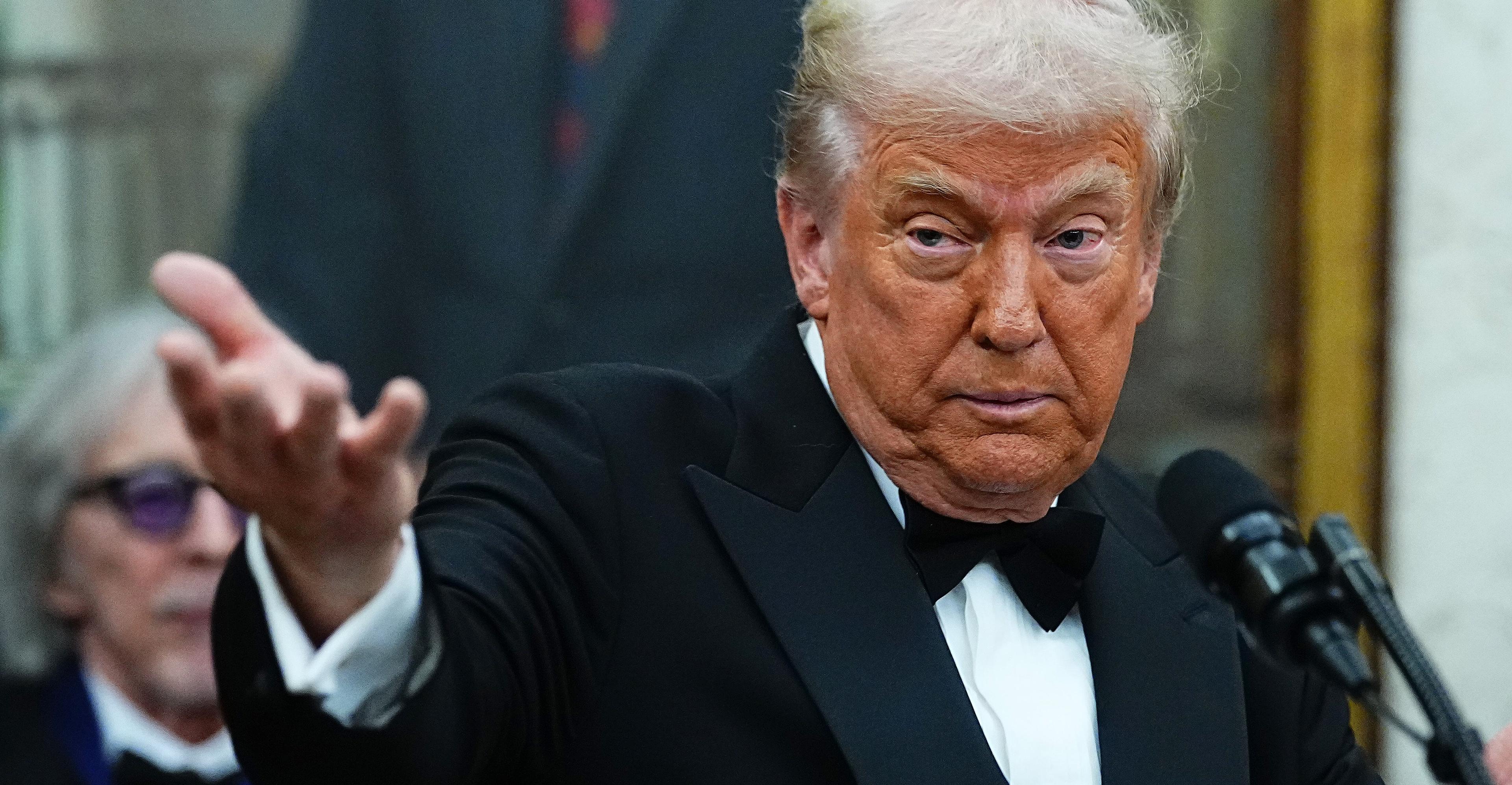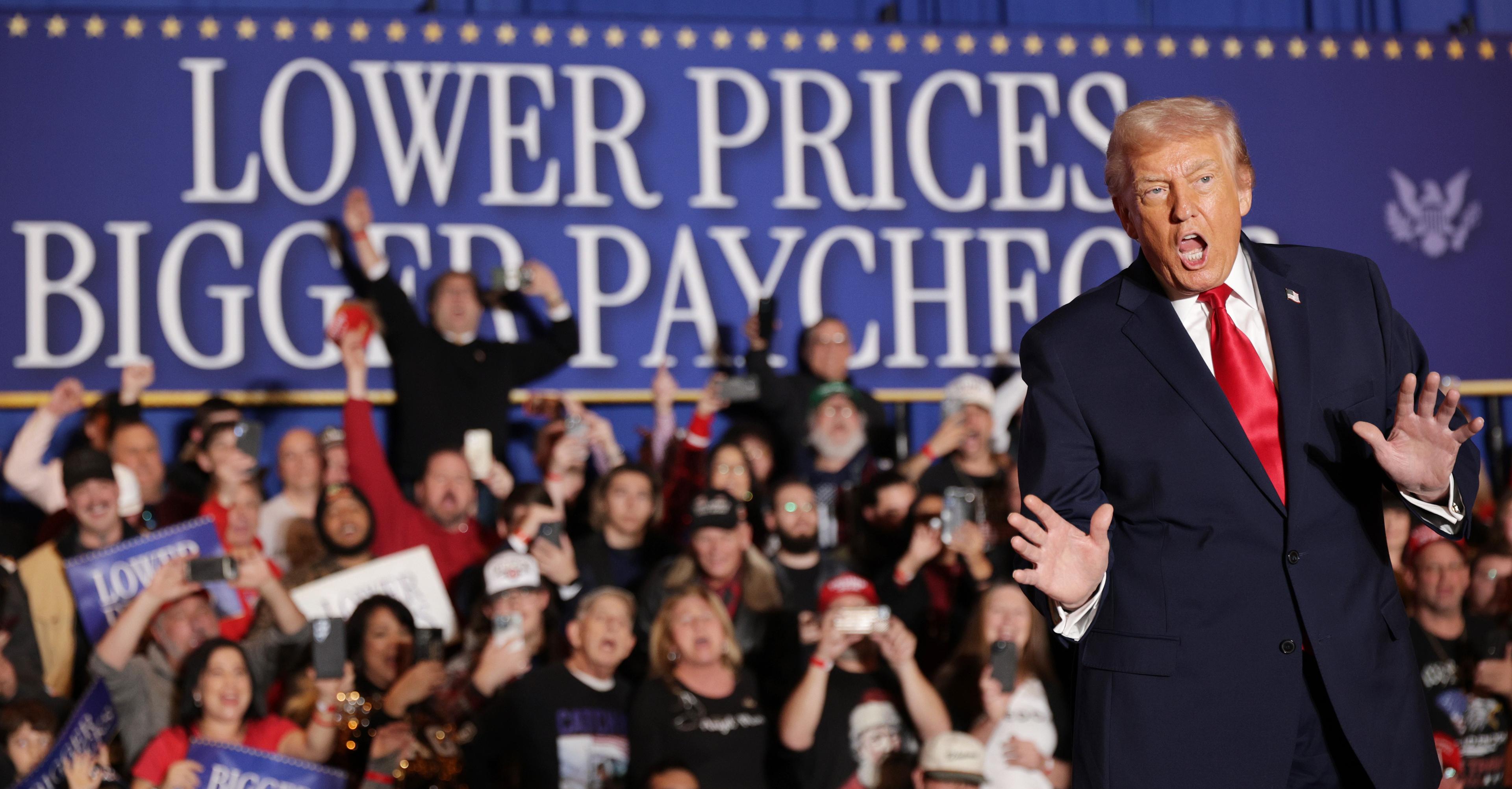For a sport that captivates America, the NFL does nothing to distance itself from the anger and grievance that has become part of our identity.

Published 2 years ago on Mar 7th 2024, 11:00 am
By Web Desk

IN THE ANNALS of interpretation, the National Football League routinely receives the most favorable benefits of the doubt. It is the unparalleled setting for both the ritual and the event -- the made-for-TV holdover from when the television was the physical epicenter of every living room. It has long mastered the art of secondary viewing -- watching the game without needing to care about who won. The revenues, the ratings and the staggering future projections reinforce the NFL as so indispensable that its anointing feels immovable -- and permanent. It stands as a colossus.
The league's unquestioned dominance is treated as the result of perfect design, but as we think back on the league's recently-concluded 104th season, with the Chiefs standing as champions (again), the Super Bowl revealed itself as both the beneficiary of a divided country -- and an enthusiastic architect of those divisions. For a sport that captivates the American audience, the NFL does nothing to distance itself from the anger and grievance that has become part of our identity.
While it might not be the proper metric for evaluation, football's increased popularity despite its violence is generally regarded as further proof of the NFL's invincibility. That was certainly the general sentiment in February 2023 when Damar Hamlin's health loomed over the entire year-end party.
A month prior, Hamlin's heart stopped when his Bills faced the Bengals in Cincinnati. The scenes were unforgettable: An ambulance sat parked on the field. Hamlin's body was shielded from television cameras, circled by praying teammates. It was unclear if Hamlin had died -- a grisly outcome that for years has been predicted as inevitable. It had happened once before: In 1971, Detroit Lions receiver Chuck Hughes collapsed on the field at Tiger Stadium against Chicago. The teams finished the game, and Hughes died later that night.
The Chiefs defeated the Eagles in the highest-rated Super Bowl ever, while Hamlin made a remarkable recovery. He sat for his first interview since his cardiac arrest just before the game and then with commissioner Roger Goodell during it. He even hinted at, almost immediately, a desire to resume his NFL career.
It all felt surreal: A man nearly died during a game on national television and, at least according to the common discourse, the NFL looked bigger and better and more unstoppable than ever, having skillfully recast its existential moment into the most heartwarming, inspirational celebration of the year. As an impulse, the sports world appropriately chose humanity over the sobriety of reconciling with why we revel in a death sport.
The NFL train then barreled along to where we are now, not only unfazed by the number of broken men wobbling into the blue tent every Sunday, but lucking into the pop crossover motherlode: the Travis Kelce-Taylor Swift celebrity romance. Now, a surge of Swifties were watching football. The world's hottest musical act coupled with the nation's most popular game. The NFL began the year with tragedy and ended it with what felt like the most emphatic of mic drops.
And Damar Hamlin? He returned to the field -- and was even named a finalist for the league's Comeback Player of the Year award. In a little more than a year, the NFL had been restored. That somber night in Cincinnati a faded image, spun into an anomaly, just a freak accident. Streamers and confetti have no memory. The Chiefs were champions once more, Patrick Mahomes' game-winning TD pass less than 15 minutes old before he began talking about the path to an unprecedented three-peat. This past Super Bowl exceeded last year's record -- 123.7 million average viewers, the most-watched television program in American history. All is forgiven. And forgotten.
OR IS IT? It is convenient to fetishize the power of the NFL as the latest monument to corporate invincibility, for glorifying runaway capitalism is an American pastime. This year, a 30-second Super Bowl ad cost a record $7 million, a near 55% jump from 2019. Major League Baseball avoided scheduling World Series games on Sunday because ratings conceded a painful truth: Americans chose an anonymous weekend of regular-season football over baseball's championship. The flexing of NFL muscle is omnipresent. In a world of hundreds of channels and siloed public interests, the Super Bowl is ostensibly the last galvanizing event in America, where everyone is watching the same thing.
It's like "going to war with a corporation that has 20 million people on a weekly basis craving their product," Albert Brooks' character famously said of the all-powerful NFL in the 2015 film "Concussion." "The NFL owns a day of the week."
The NFL has it all -- and certainly financially and culturally it is unmatched -- but instead of galvanizing the public, the league allowed itself to be the staging ground for the worst characteristics of the country whose popular culture it dominates. The public might not be running away from the risks highlighted when Hamlin collapsed on the field, but it is running toward the disgraceful misogyny directed at Taylor Swift, the ubiquitous war rhetoric and metaphor, and the lingering, uncomfortable nationalism all as present in the selling of the sport as the brilliance of Patrick Mahomes.
If the NFL is going to claim its place as the cultural leader of the country's entertainment -- and constantly reference ratings to make its point -- then it can steer the country away from its darker, divisive impulses. Instead, it traffics within them.
Swift's arrival was the luckiest of public relations strokes. America revels in money and power, in being "self-made," and it absolutely devours celebrity. Swift-Kelce showed the NFL had struck oil again. The numbers proved it, too, as did the chatter. Swifties -- many of them new viewers -- were now cheering on the Chiefs and wondering what "ineligible receiver downfield" could possibly mean when every play begins with 22 guys smashing into each other.
And what has the NFL done with this moment? It stood idly by, inaction that added fuel to a culture war that will only intensify during an election year. Conservative politicians unleashed on Swift, presumably for her voter outreach, and against Kelce for his support of the COVID vaccine. Whether the attacks came from the outside or from tangential or formal partners, the NFL did little to disassociate itself from these ugly themes. A new demographic of young fans was now paying attention to football -- and then a certain segment of the game didn't want women around. An easy win was weakened, spoiled by misogyny.
The NFL has needed women. It needed women after its men were dying by suicide and the increased visibility of traumatic brain injuries made mothers reconsider if their babies should be playing football at all. After years of denying it had a brain trauma crisis, the league's public relations machine sprang into action in a different way, appealing to moms everywhere that football belonged to them, too. The league even spent millions of dollars funding research into brain issues that stem from concussions. Yet, as publicity around the crisis began to subside, what did the NFL do? It aggressively jammed through a concussion and brain injury settlement for its former players that, while paying out billions, contains an ugly reality, too -- not everyone is covered and is taken care of. The Washington Post reported in January that the NFL "routinely fails to deliver money and medical care to former players suffering from dementia and CTE," saving the league "hundreds of millions of dollars, if not more."
The game cared about their kids' safety -- and it cared about women, too. The league partnered first with breast cancer giant the Susan G. Komen Foundation, and not soon after, pink merch was for sale, and players were wearing pink cleats -- homages to moms, sisters and girlfriends everywhere. The game has made a show of cultivating women -- until Swift arrived, and more women and girls had a reason to arrive at the game on their own terms, for their own reasons, with their own drawing card.
At his annual Super Bowl news conference, Goodell praised Swift's entertainment acumen and her ability to put on a mega-show. He acknowledged her influence in bringing new eyeballs to the sport, but he did not address the elephant in the room -- the misogyny that has accompanied her arrival. Perhaps Goodell feels there is nothing he can do about the networks, broadcast partners, media and fans who have taken what should be a moment of triumph and reduced it to the Battle of the Sexes (or worse), but he knows better.
The grievances are so empty. After Super Bowl X, when the Steelers and Cowboys catapulted the game into Americana, the Super Bowl has been only partially about football, sharing the stage with commercials, parties, family and friends. The "Real Fans" have always known the Super Bowl barely belongs to them. Whether the diversion is gambling, fantasy or the halftime show, no sport has mastered selling the game without caring about the game more than football. For good measure, during the second half of Chiefs-49ers, CBS did a camera sweep of all the A-listers in attendance, from Jeff Goldblum to Jay-Z and Beyoncé -- and the world didn't collapse.
AMERICA IS NO LONGER AT WAR, technically, with anyone but itself. Sept. 11 was nearly a quarter century ago. Osama bin Laden has been dead since 2011. The Iraq war is over. The war in Afghanistan is over. Yet every Sunday, the NFL still imposes militarism on its viewers and its players. Before the Super Bowl, CBS showed the requisite military base on foreign soil (South Korea) and the Navy band from "the military district of Washington, D.C." Twenty-two and a half years after 9/11, the other sports have quietly drawn down from nationalistic themes -- but not football, where war is forever. Four-year graduating college seniors this spring were not even born when the towers fell, but the NFL traffics in us versus them.
Us versus Them, of course, has also for the past dozen years meant Black versus white, even though more than 43% of American service members are people of color, and 71% of NFL players are Black. The kneelers stopped kneeling long ago. Colin Kaepernick hasn't played a down in seven years -- he has now been out of the NFL longer than he played in it -- but the NFL continues to market its game through the flags and flyovers not only in service of overseas military personnel but in a prolonged, loud pander to the offended whites angry over Trayvon Martin, Ferguson, Kaepernick and Black empowerment as a signal it recognizes who the real Americans are, and who is not -- and it wants to comfort them, especially during an election year.
The NFL, the commissioner and its 32 team owners for years encouraged the division: ending and harassing the careers of many of its Black players who protested police violence against American citizens. Even the inspirational sloganeering imprinted across NFL end zones ("It Takes All of Us" and "End Racism") is a response to its own culpability it would not acknowledge until America witnessed a Minneapolis police officer engage in a slow-motion murder of a Black man. This also prompted the league to donate more than $250 million to social justice groups, but when Black players had the nerve to speak, the NFL's message was it did not want politics in its product -- and yet, the sport is overtly weighted by politics. At least the Black guys have been quieted.
INVINCIBILITY HAS another name: fatigue. The NFL is profiting off a period of slumber, an easy ritual in a country tired of itself, out of ideas yet unequipped and unwilling to engage in the hard work of reinvention. Even the Pro Bowl weekend's second go at flag football a month ago as a safer, quirkier alternative to the old Pro Bowl -- a recognition that maybe the entire bone-cracking spectacle needed a second act -- opened with the same exhausted relics from the 1960s: an American flag stretching across three-quarters of the field, military on stage for the national anthem and, as a finishing touch, transport helicopters flew over the field.
Transport helicopters. For a flag football game.
If this be invincibility -- not living up to the financial and moral obligations owed to the players who make everyone rich at the expense of their bodies and future livelihood and allowing your sport to be the staging ground for a forever culture war -- then perhaps we would all benefit from some vulnerability. With a little bit of courage, the NFL could look to the future, actually lead the popular culture it is so proud of dominating, and realize what should be obvious: Don't be afraid of a new playbook. The money is going to be there.
The league's unquestioned dominance is treated as the result of perfect design, but as we think back on the league's recently-concluded 104th season, with the Chiefs standing as champions (again), the Super Bowl revealed itself as both the beneficiary of a divided country -- and an enthusiastic architect of those divisions. For a sport that captivates the American audience, the NFL does nothing to distance itself from the anger and grievance that has become part of our identity.
While it might not be the proper metric for evaluation, football's increased popularity despite its violence is generally regarded as further proof of the NFL's invincibility. That was certainly the general sentiment in February 2023 when Damar Hamlin's health loomed over the entire year-end party.
A month prior, Hamlin's heart stopped when his Bills faced the Bengals in Cincinnati. The scenes were unforgettable: An ambulance sat parked on the field. Hamlin's body was shielded from television cameras, circled by praying teammates. It was unclear if Hamlin had died -- a grisly outcome that for years has been predicted as inevitable. It had happened once before: In 1971, Detroit Lions receiver Chuck Hughes collapsed on the field at Tiger Stadium against Chicago. The teams finished the game, and Hughes died later that night.
The Chiefs defeated the Eagles in the highest-rated Super Bowl ever, while Hamlin made a remarkable recovery. He sat for his first interview since his cardiac arrest just before the game and then with commissioner Roger Goodell during it. He even hinted at, almost immediately, a desire to resume his NFL career.
It all felt surreal: A man nearly died during a game on national television and, at least according to the common discourse, the NFL looked bigger and better and more unstoppable than ever, having skillfully recast its existential moment into the most heartwarming, inspirational celebration of the year. As an impulse, the sports world appropriately chose humanity over the sobriety of reconciling with why we revel in a death sport.
The NFL train then barreled along to where we are now, not only unfazed by the number of broken men wobbling into the blue tent every Sunday, but lucking into the pop crossover motherlode: the Travis Kelce-Taylor Swift celebrity romance. Now, a surge of Swifties were watching football. The world's hottest musical act coupled with the nation's most popular game. The NFL began the year with tragedy and ended it with what felt like the most emphatic of mic drops.
And Damar Hamlin? He returned to the field -- and was even named a finalist for the league's Comeback Player of the Year award. In a little more than a year, the NFL had been restored. That somber night in Cincinnati a faded image, spun into an anomaly, just a freak accident. Streamers and confetti have no memory. The Chiefs were champions once more, Patrick Mahomes' game-winning TD pass less than 15 minutes old before he began talking about the path to an unprecedented three-peat. This past Super Bowl exceeded last year's record -- 123.7 million average viewers, the most-watched television program in American history. All is forgiven. And forgotten.
OR IS IT? It is convenient to fetishize the power of the NFL as the latest monument to corporate invincibility, for glorifying runaway capitalism is an American pastime. This year, a 30-second Super Bowl ad cost a record $7 million, a near 55% jump from 2019. Major League Baseball avoided scheduling World Series games on Sunday because ratings conceded a painful truth: Americans chose an anonymous weekend of regular-season football over baseball's championship. The flexing of NFL muscle is omnipresent. In a world of hundreds of channels and siloed public interests, the Super Bowl is ostensibly the last galvanizing event in America, where everyone is watching the same thing.
It's like "going to war with a corporation that has 20 million people on a weekly basis craving their product," Albert Brooks' character famously said of the all-powerful NFL in the 2015 film "Concussion." "The NFL owns a day of the week."
The NFL has it all -- and certainly financially and culturally it is unmatched -- but instead of galvanizing the public, the league allowed itself to be the staging ground for the worst characteristics of the country whose popular culture it dominates. The public might not be running away from the risks highlighted when Hamlin collapsed on the field, but it is running toward the disgraceful misogyny directed at Taylor Swift, the ubiquitous war rhetoric and metaphor, and the lingering, uncomfortable nationalism all as present in the selling of the sport as the brilliance of Patrick Mahomes.
If the NFL is going to claim its place as the cultural leader of the country's entertainment -- and constantly reference ratings to make its point -- then it can steer the country away from its darker, divisive impulses. Instead, it traffics within them.
Swift's arrival was the luckiest of public relations strokes. America revels in money and power, in being "self-made," and it absolutely devours celebrity. Swift-Kelce showed the NFL had struck oil again. The numbers proved it, too, as did the chatter. Swifties -- many of them new viewers -- were now cheering on the Chiefs and wondering what "ineligible receiver downfield" could possibly mean when every play begins with 22 guys smashing into each other.
And what has the NFL done with this moment? It stood idly by, inaction that added fuel to a culture war that will only intensify during an election year. Conservative politicians unleashed on Swift, presumably for her voter outreach, and against Kelce for his support of the COVID vaccine. Whether the attacks came from the outside or from tangential or formal partners, the NFL did little to disassociate itself from these ugly themes. A new demographic of young fans was now paying attention to football -- and then a certain segment of the game didn't want women around. An easy win was weakened, spoiled by misogyny.
The NFL has needed women. It needed women after its men were dying by suicide and the increased visibility of traumatic brain injuries made mothers reconsider if their babies should be playing football at all. After years of denying it had a brain trauma crisis, the league's public relations machine sprang into action in a different way, appealing to moms everywhere that football belonged to them, too. The league even spent millions of dollars funding research into brain issues that stem from concussions. Yet, as publicity around the crisis began to subside, what did the NFL do? It aggressively jammed through a concussion and brain injury settlement for its former players that, while paying out billions, contains an ugly reality, too -- not everyone is covered and is taken care of. The Washington Post reported in January that the NFL "routinely fails to deliver money and medical care to former players suffering from dementia and CTE," saving the league "hundreds of millions of dollars, if not more."
The game cared about their kids' safety -- and it cared about women, too. The league partnered first with breast cancer giant the Susan G. Komen Foundation, and not soon after, pink merch was for sale, and players were wearing pink cleats -- homages to moms, sisters and girlfriends everywhere. The game has made a show of cultivating women -- until Swift arrived, and more women and girls had a reason to arrive at the game on their own terms, for their own reasons, with their own drawing card.
At his annual Super Bowl news conference, Goodell praised Swift's entertainment acumen and her ability to put on a mega-show. He acknowledged her influence in bringing new eyeballs to the sport, but he did not address the elephant in the room -- the misogyny that has accompanied her arrival. Perhaps Goodell feels there is nothing he can do about the networks, broadcast partners, media and fans who have taken what should be a moment of triumph and reduced it to the Battle of the Sexes (or worse), but he knows better.
The grievances are so empty. After Super Bowl X, when the Steelers and Cowboys catapulted the game into Americana, the Super Bowl has been only partially about football, sharing the stage with commercials, parties, family and friends. The "Real Fans" have always known the Super Bowl barely belongs to them. Whether the diversion is gambling, fantasy or the halftime show, no sport has mastered selling the game without caring about the game more than football. For good measure, during the second half of Chiefs-49ers, CBS did a camera sweep of all the A-listers in attendance, from Jeff Goldblum to Jay-Z and Beyoncé -- and the world didn't collapse.
AMERICA IS NO LONGER AT WAR, technically, with anyone but itself. Sept. 11 was nearly a quarter century ago. Osama bin Laden has been dead since 2011. The Iraq war is over. The war in Afghanistan is over. Yet every Sunday, the NFL still imposes militarism on its viewers and its players. Before the Super Bowl, CBS showed the requisite military base on foreign soil (South Korea) and the Navy band from "the military district of Washington, D.C." Twenty-two and a half years after 9/11, the other sports have quietly drawn down from nationalistic themes -- but not football, where war is forever. Four-year graduating college seniors this spring were not even born when the towers fell, but the NFL traffics in us versus them.
Us versus Them, of course, has also for the past dozen years meant Black versus white, even though more than 43% of American service members are people of color, and 71% of NFL players are Black. The kneelers stopped kneeling long ago. Colin Kaepernick hasn't played a down in seven years -- he has now been out of the NFL longer than he played in it -- but the NFL continues to market its game through the flags and flyovers not only in service of overseas military personnel but in a prolonged, loud pander to the offended whites angry over Trayvon Martin, Ferguson, Kaepernick and Black empowerment as a signal it recognizes who the real Americans are, and who is not -- and it wants to comfort them, especially during an election year.
The NFL, the commissioner and its 32 team owners for years encouraged the division: ending and harassing the careers of many of its Black players who protested police violence against American citizens. Even the inspirational sloganeering imprinted across NFL end zones ("It Takes All of Us" and "End Racism") is a response to its own culpability it would not acknowledge until America witnessed a Minneapolis police officer engage in a slow-motion murder of a Black man. This also prompted the league to donate more than $250 million to social justice groups, but when Black players had the nerve to speak, the NFL's message was it did not want politics in its product -- and yet, the sport is overtly weighted by politics. At least the Black guys have been quieted.
INVINCIBILITY HAS another name: fatigue. The NFL is profiting off a period of slumber, an easy ritual in a country tired of itself, out of ideas yet unequipped and unwilling to engage in the hard work of reinvention. Even the Pro Bowl weekend's second go at flag football a month ago as a safer, quirkier alternative to the old Pro Bowl -- a recognition that maybe the entire bone-cracking spectacle needed a second act -- opened with the same exhausted relics from the 1960s: an American flag stretching across three-quarters of the field, military on stage for the national anthem and, as a finishing touch, transport helicopters flew over the field.
Transport helicopters. For a flag football game.
If this be invincibility -- not living up to the financial and moral obligations owed to the players who make everyone rich at the expense of their bodies and future livelihood and allowing your sport to be the staging ground for a forever culture war -- then perhaps we would all benefit from some vulnerability. With a little bit of courage, the NFL could look to the future, actually lead the popular culture it is so proud of dominating, and realize what should be obvious: Don't be afraid of a new playbook. The money is going to be there.
Security forces kill 13 Khwarij in two separate engagements in KP: ISPR
- 15 hours ago
Source: Gray, Nats reach deal to avoid arbitration
- 21 hours ago

How do you know if you’re wasting your life?
- 7 hours ago
Pakistan aims to become model in digital assets regulation: Bilal saqib
- 14 hours ago
Bondi Beach shooting: Australia hails ‘hero’ Ahmed who stopped gunman
- 14 hours ago
Sources: Rangers address needs with 3 signings
- 21 hours ago
Diaz picked Dodgers because 'I'm looking to win'
- 21 hours ago
Jays president Shapiro given new 5-year deal
- 21 hours ago

Pakistan condemns attack on UNISFA in Kadugli, Sudan
- 14 hours ago
Australian PM declares Sydney shooting a ‘terrorist’ attack targeting Jews
- 14 hours ago
Under-19 Asia Cup: India beat Pakistan by 90 runs
- 15 hours ago
NHL board of governors eager to see more 'color vs. color' jersey matchups
- 21 hours ago
You May Like
Trending






